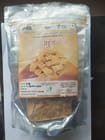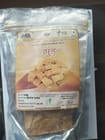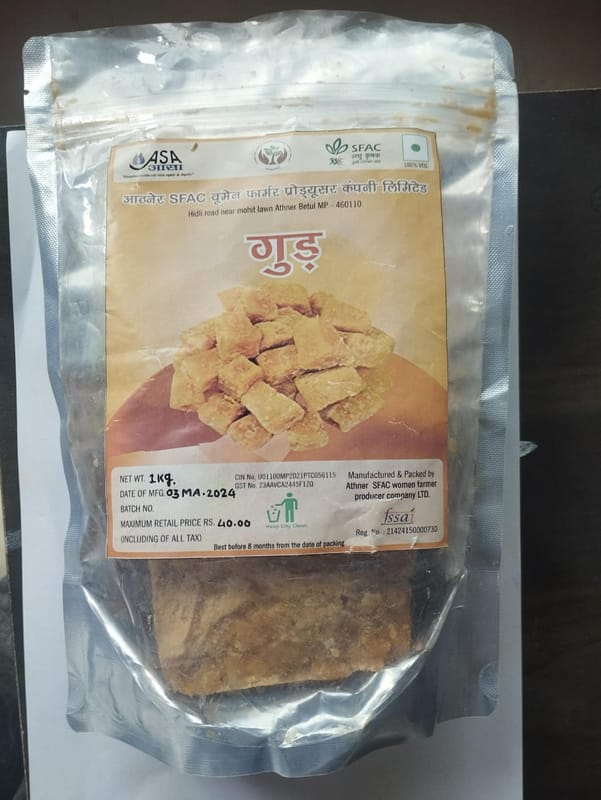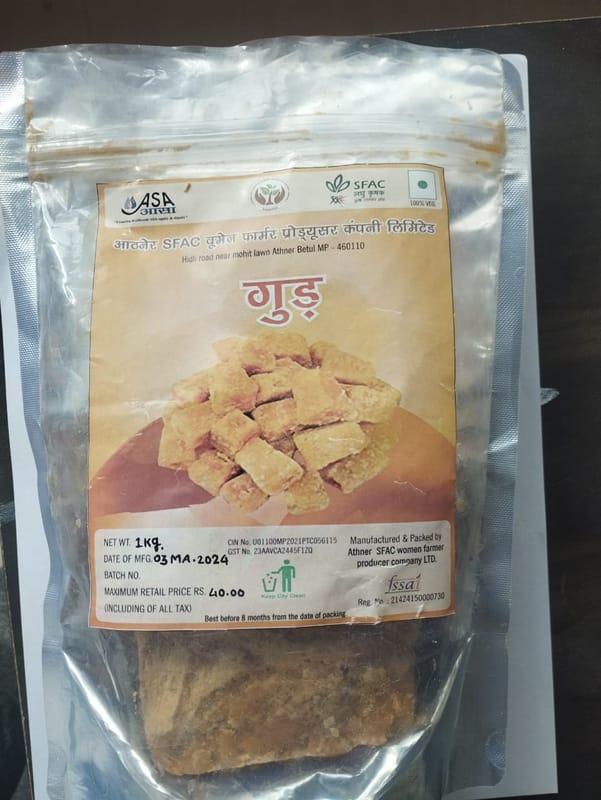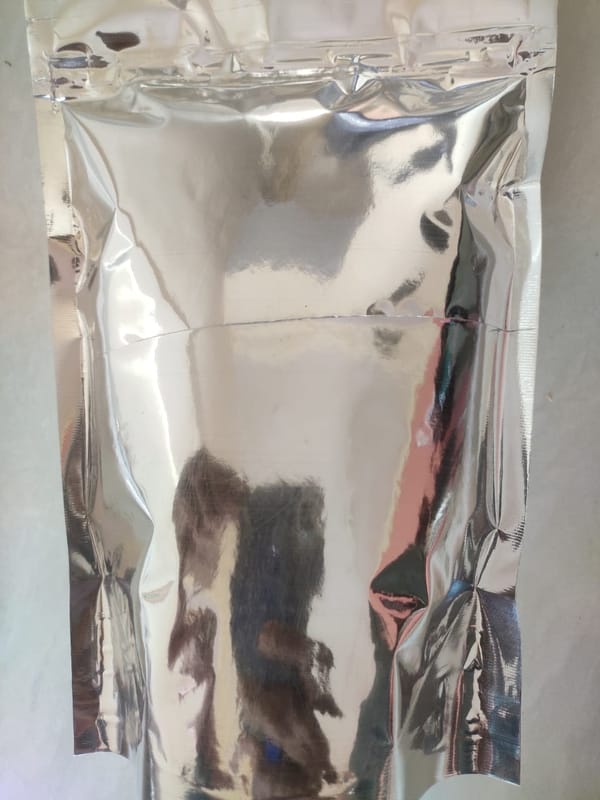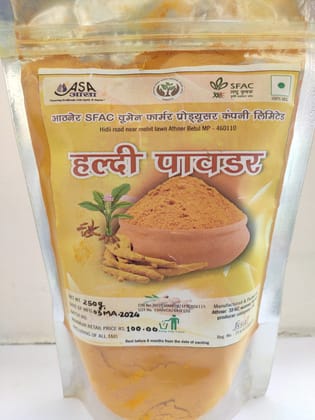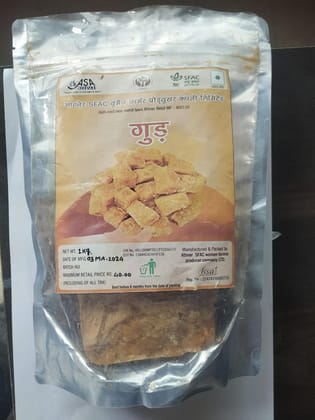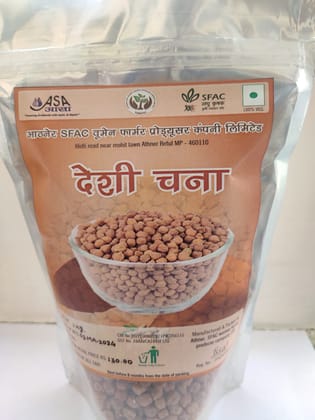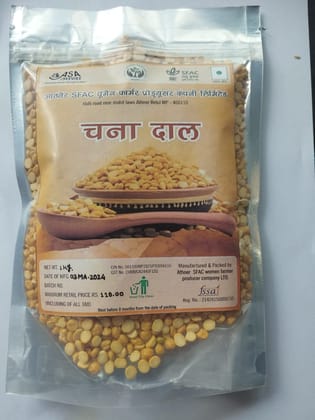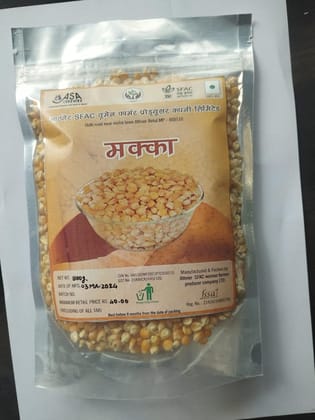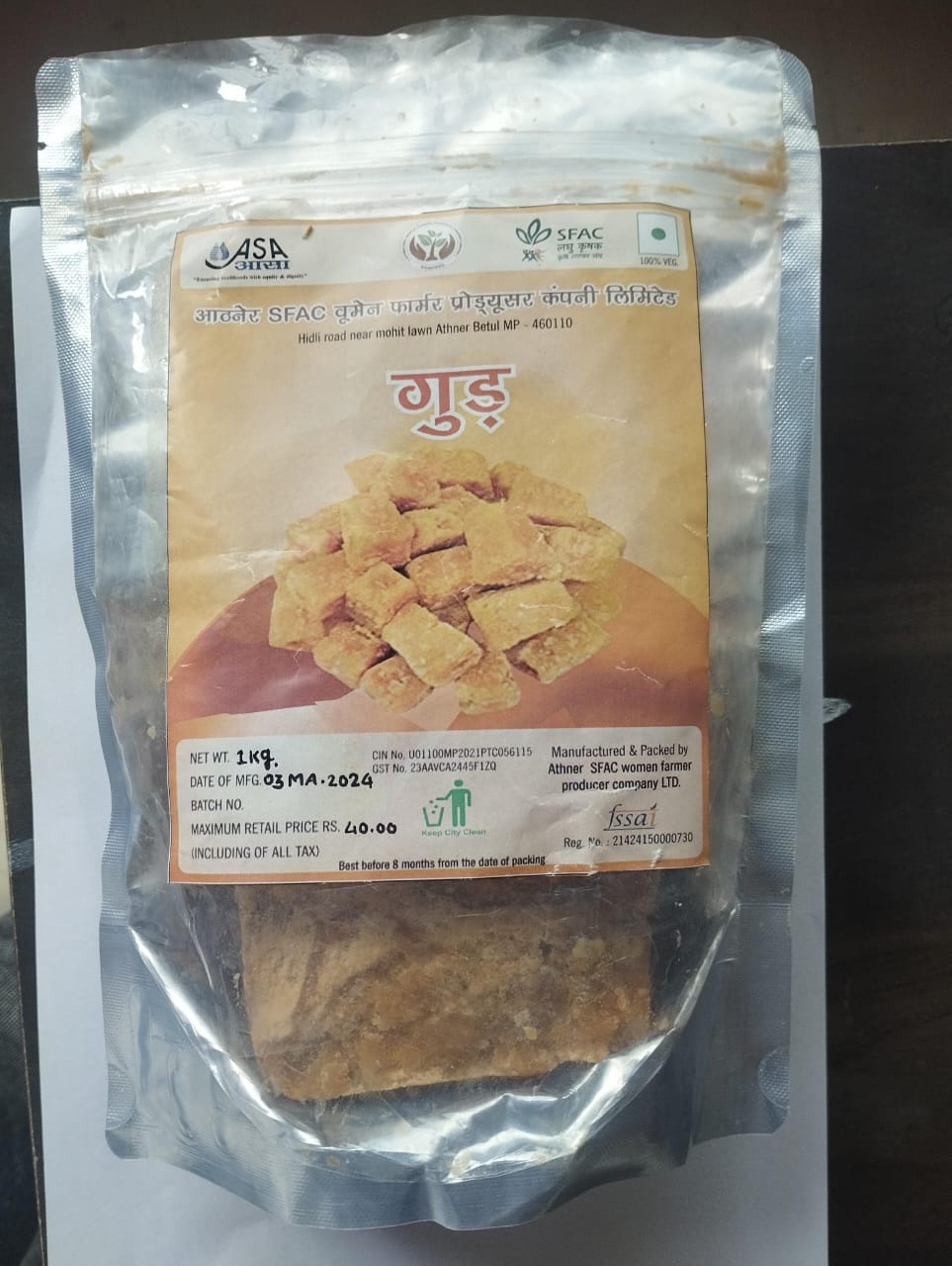
"Gud" is a term commonly used in South Asia, particularly in India, to refer to jaggery. Jaggery is a traditional sweetener made from sugarcane juice or palm sap. It's often used as a substitute for sugar in cooking and baking and is valued for its distinct flavor and health benefits.
Here are some key points about gud (jaggery):
Production: Jaggery is produced by boiling sugarcane juice or palm sap until it thickens and solidifies. The resulting product is then molded into blocks, cakes, or cones.
Color and Flavor: The color of jaggery can vary from golden brown to dark brown, depending on the source of the raw material and the processing method. It has a rich, caramel-like flavor with hints of molasses and a slightly earthy taste.
Nutritional Benefits: Jaggery contains trace amounts of vitamins and minerals, including iron, magnesium, potassium, and vitamins B and C. It also retains some of the natural nutrients present in sugarcane juice or palm sap, making it a relatively healthier alternative to refined sugar.
Uses: Jaggery is used in various culinary applications, including sweet and savory dishes, desserts, beverages, and snacks. It's commonly used in Indian cuisine to sweeten dishes like sweets (e.g., laddoos, halwa), chai (tea), and various traditional recipes.
Health Benefits: Some people prefer jaggery over refined sugar due to its perceived health benefits. It's believed to have digestive properties, aid in detoxification, and provide relief from colds and coughs. However, it's essential to consume jaggery in moderation, as it's still a concentrated source of calories and carbohydrates.
Storage: Jaggery should be stored in a cool, dry place away from moisture to prevent it from becoming sticky or attracting pests. It has a long shelf life and can last for several months if stored properly.
Overall, gud (jaggery) is a versatile and flavorful sweetener that's deeply rooted in culinary traditions across South Asia and beyond.
Popular Categories
Support
Language
Our apps
Gud (Jaggery)
"Gud" is a term commonly used in South Asia, particularly in India, to refer to jaggery. Jaggery is a traditional sweetener made from sugarcane juice or palm sap. It's often used as a substitute for sugar in cooking and baking and is valued for its distinct flavor and health benefits.
Here are some key points about gud (jaggery):
Production: Jaggery is produced by boiling sugarcane juice or palm sap until it thickens and solidifies. The resulting product is then molded into blocks, cakes, or cones.
Color and Flavor: The color of jaggery can vary from golden brown to dark brown, depending on the source of the raw material and the processing method. It has a rich, caramel-like flavor with hints of molasses and a slightly earthy taste.
Nutritional Benefits: Jaggery contains trace amounts of vitamins and minerals, including iron, magnesium, potassium, and vitamins B and C. It also retains some of the natural nutrients present in sugarcane juice or palm sap, making it a relatively healthier alternative to refined sugar.
Uses: Jaggery is used in various culinary applications, including sweet and savory dishes, desserts, beverages, and snacks. It's commonly used in Indian cuisine to sweeten dishes like sweets (e.g., laddoos, halwa), chai (tea), and various traditional recipes.
Health Benefits: Some people prefer jaggery over refined sugar due to its perceived health benefits. It's believed to have digestive properties, aid in detoxification, and provide relief from colds and coughs. However, it's essential to consume jaggery in moderation, as it's still a concentrated source of calories and carbohydrates.
Storage: Jaggery should be stored in a cool, dry place away from moisture to prevent it from becoming sticky or attracting pests. It has a long shelf life and can last for several months if stored properly.
Overall, gud (jaggery) is a versatile and flavorful sweetener that's deeply rooted in culinary traditions across South Asia and beyond.
| Country of origin | India |
|---|---|
| Common name | Gud |
| Net Quantity | 100 unit |
| Weight | 500 g |
| Manufacturer or packer name | Athner SFAC women Farmer producer company LTD |
| Manufacturer or packer address | Hidli Road Athner Dist- betul MP |
| Manufacturing Date | 03/2024 |
| contact details consumer care | 07869732368 |
Other Products from seller ATHNER SFAC WOMEN FARMER PRODUCER COMPANY LIMITED
- Not Cancellable
- Not Returnable



